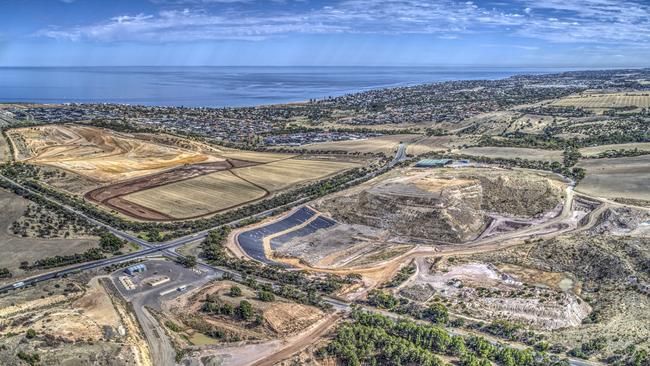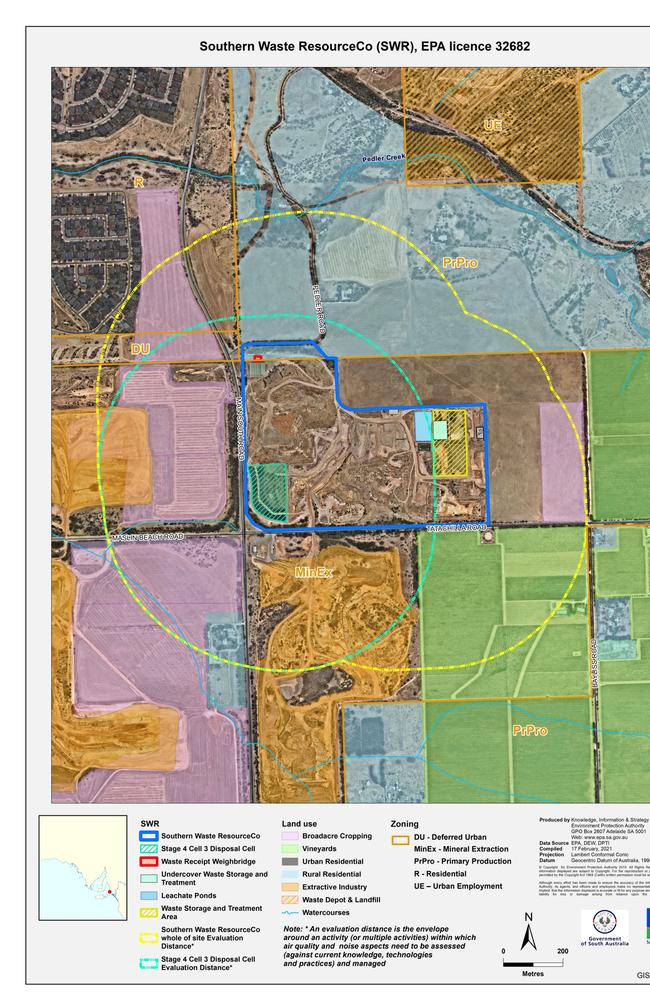PFAS landfill dump at McLaren Vale rejected by EPA
A proposal for a controversial PFAS landfill dump planned for McLaren Vale has been rejected by the EPA.
SA News
Don't miss out on the headlines from SA News. Followed categories will be added to My News.
The Environment Protection Authority has refused to grant permission for a controversial PFAS dump planned for McLaren Vale.
EPA Chief Executive Tony Circelli said after a rigorous assessment process the EPA Board had decided not to approve the Southern Waste ResourceCo application, despite a Flinders Uni study finding potential contamination areas were relatively small and did not include key areas of irrigation.
SWR had proposed to receive, store, treat and dispose of solid waste contaminated with PFAS at its McLaren Vale landfill.
The plan horrified the winemaking community in the region, which has just been named South Australia’s top tourist destination, and the sixth best in the country, by hotel booking site Wotif.com.
Mr Circelli said the board had taken the research from Flinders Uni’s National Centre for Groundwater Research and Training into account, as well as national and SA guidelines for PFAS management.
It also undertook a detailed site investigation, an assessment of PFAS containment barrier systems and community submissions, he said.
“In its deliberations the board noted that PFAS is a persistent and bio-accumulative chemical of concern that is toxic to some organisms, highly transmissible in water, with national agreement that special guidelines should apply to its management.

“While Southern Waste ResourceCo had proposed best-practice engineering measures in its application, the board considered an unacceptable level of risk remained.”
Mr Circelli told the ABC on Thursday morning the EPA had particularly considered the longevity of PFAS.
“If we were approving this application, we would be really committing future generations to ensuring the continued management of this chemical would have to continue occurring for many years,” he said.
“Given also the very sensitive location, (the board) found on balance it would reject the proposal.”
SWR does have the right to a judicial review of the process undertaken by the EPA to make the decision, but not a review of the decision itself, Mr Circelli said
And the company would need to seek their own legal advice on this. There is nowhere in SA that takes PFAS waste at this time.
It comes as experts said McLaren Vale vineyards would not be contaminated with chemicals known as PFAS even in a worst-case scenario of a planned landfill leaking.
Southern Waste ResourceCo’s wanted to host a PFAS dump at its Tatachilla Road depot, which already accepts other types of contaminated waste.
In response to community concern and to help assess the application, the EPA asked Flinders University scientists to examine the potential for contamination to spread through the water table in the event of a catastrophic failure in landfill lining. Flinders hydrogeology expert Professor Peter Cook, director of the National Centre for Groundwater Research and Training and the lead author of a report to the EPA, said the area that would potentially be affected “is small relative to the size of the Willunga Basin, and it’s not in the key areas of irrigation”.
“It is a complicated site,” Prof Cook told The Advertiser.
“We can be very confident that (contamination) would be limited to within this (small) area.
“And that area, as we’ve said, doesn’t contain any licensed bores that are used to irrigate vineyards.”

He added that groundwater contamination was always a concern so “the most important thing is really careful monitoring, so that if there is some catastrophic breach of the liners, we can remediate the system and clean it up as soon as possible”.
EPA chief executive Tony Circelli said the Flinders research showed that the viticulture area was upstream and to the east of the landfill site, so the risk to viticulture was “very, very hard to comprehend”.
“So what this research has done is it has confirmed the envelope of impact for us, which is useful,” he said.
“It confirms that the risk to these other aquifers is hard to imagine, even under unlikely worst-case scenarios.”




